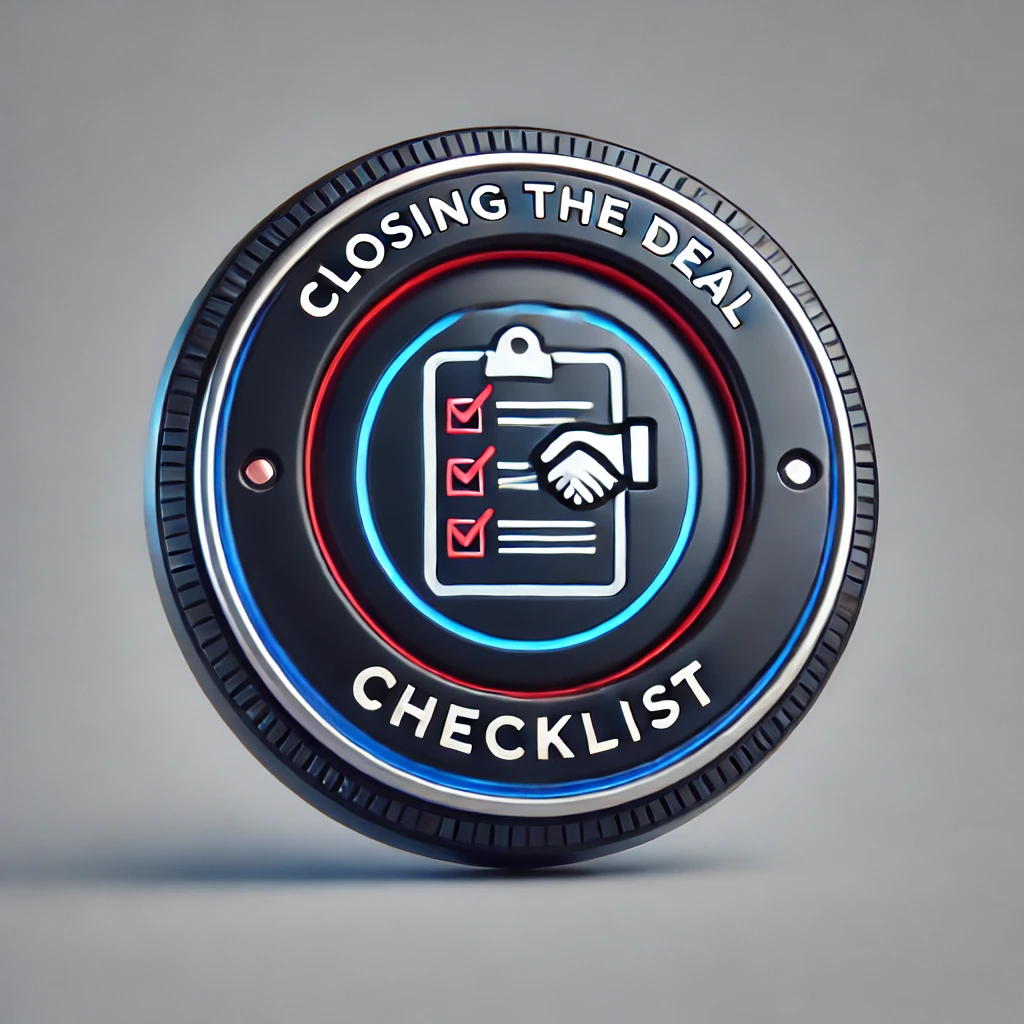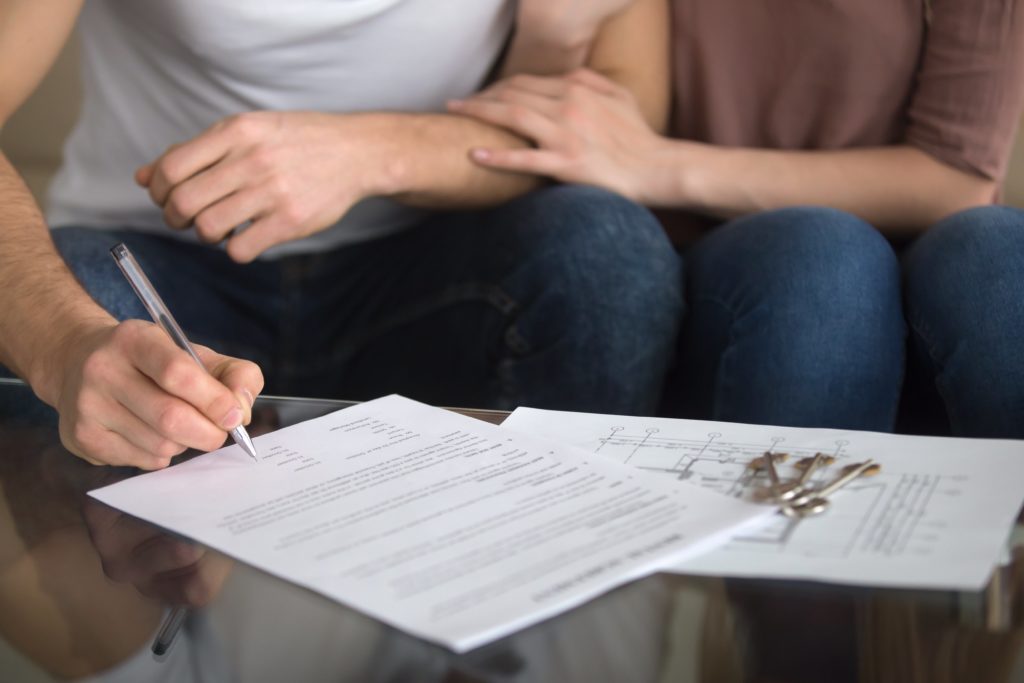
Check out our app!
Explore more features on mobile.
Close on the Property
Ready to seal the deal and make it official? This guide walks you through the final steps—from reviewing closing documents and coordinating signings to transferring ownership—while our dedicated Task Page keeps you organized until every detail is finalized.

Step 1: Review Closing Documents
Loan Estimate & Closing Disclosure
Double-Check Numbers: Compare your Closing Disclosure to the Loan Estimate you received earlier. Make sure interest rates, loan terms, and closing costs match what you’ve been quoted.
Understand Your Payments: Note your monthly principal, interest, taxes, and insurance (PITI) to confirm your projected cash flow.
Title Documents & Insurance
Title Search: Ensure the title is clear of liens, judgments, or ownership disputes.
Title Insurance: Protects you (and your lender) against title-related claims in the future.
Property Insurance Requirements
Homeowners/Landlord Insurance: Arrange sufficient coverage, whether you plan to live in the property or rent it out.
Flood or Additional Coverage: Check if the property requires specialized coverage (e.g., flood or earthquake insurance).
Why This Matters: Verifying all closing documents helps prevent surprises and ensures you’re fully aware of your financial obligations. A thorough review can save you from potential legal or financial issues later.
Step 2: Confirm Completion of Repairs
Final Walk-Through
Check Agreed-Upon Repairs: If the seller agreed to fix items based on inspection findings, confirm the work is done correctly.
Look for New Issues: Verify there’s no unexpected damage or problems that appeared since your last visit.
Request Documentation
Receipts & Warranties: If the seller hired contractors, ask for documentation proving the quality and date of repairs.
Contractor Contact: Keep the contractor’s details in case you need follow-up work or clarifications.
Why This Matters: A final review of repairs ensures you’re getting the property in the agreed-upon condition. Identifying missed or subpar repairs before closing gives you leverage to ask for credits or further fixes.
Step 3: Pay Closing Costs
Typical Fees
Loan Origination Fee: Charged by your lender for processing the loan.
Appraisal & Inspection: You may pay these fees at closing if not settled earlier.
Title Insurance & Attorney Fees: Covers legal aspects and protects both buyer and lender.
Other Costs: Taxes, escrow deposits, and other miscellaneous fees.
Arranging Payment
Wire Transfer or Cashier’s Check: Confirm how your title company or attorney’s office expects you to pay.
Review Final Costs: Make sure each fee matches what’s on your Closing Disclosure.
Why This Matters: Closing costs can add up to thousands of dollars. Budgeting for them and carefully reviewing your settlement statement prevents any last-minute financial surprises.
Step 4: Sign the Paperwork
Mortgage Note & Deed of Trust
Legal Obligation: The mortgage note signifies your promise to repay the loan, while the deed of trust secures the property as collateral.
Accurate Personal Details: Make sure your name, address, and loan terms are correct.
Additional Documents
Settlement Statement: Outlines all buyer and seller fees, credits, and prorations.
Property Deed: Transfers ownership from the seller to you.
Why This Matters: Once you sign these documents, you’re officially entering into a binding legal contract. Reviewing them thoroughly ensures you understand your rights and obligations.
Step 5: Take Possession
Funding & Recording
Funding: The lender disburses the loan funds, and you finalize any remaining out-of-pocket costs.
Recording: The local government records the deed, making you the official owner.
Move-In or Prepare for Tenants
Keys & Access: Arrange to get all keys, gate codes, or garage remotes at closing.
Utilities & Services: Make sure electricity, gas, water, and internet are transferred to your name.
Why This Matters: Taking formal possession of the property means you can start your next steps—whether that’s moving in, renovating, or listing the unit for rent. Seamless coordination on closing day avoids gaps in service or security.
Action Items
1. Double-Check Settlement Statements
Ensure every line item matches your prior estimates and there are no unexpected fees.
2. Arrange Utilities & Insurance
Schedule start dates for utilities and confirm insurance coverage begins on closing day to protect your new asset.
Summary
1. Review Documents Thoroughly: Scrutinize your Closing Disclosure, title paperwork, and insurance requirements to confirm consistency and accuracy.
2. Verify Repairs: Complete a final walk-through to ensure any negotiated repairs are satisfactorily finished.
3. Pay Closing Costs & Sign Final Papers: Understand each fee you’re paying and sign all legal documents to finalize the transaction.
4. Take Possession: Once the deal is funded and recorded, you’ll officially own the property—set up utilities, change locks, and plan for occupancy.
By carefully reviewing your closing documents and verifying the property’s condition, you’ll minimize headaches and start your real estate investment on solid ground.
More Tools and Professionals to Consult!
Finalizing your property purchase is more than just signing papers—it’s about ensuring every detail is accurate. At closing, verify that your closing disclosure matches the earlier estimates, double-check all fees, taxes, and insurance charges, and confirm that every term is as agreed. Leverage professional advice and tools to review legal documents and secure your financing. This careful approach protects your investment and sets the stage for a smooth transition to homeownership.
Closing Disclosure (CD) Explained: Mortgage Settlement Statement
The Closing Disclosure (CD) Explained : Mortgage Settlement Statement. You’re about to close your loan so what is this CD they keep mentioning?
How loan officers TRICK YOU (and how to prevent it)
There are 2 tricks loan officers can use that may make you choose the wrong lender to work with. Once you know them, you’ll be able to spot the good lenders from the bad ones.
More Investing Tips and Strategies Real Estate
Stay informed with the latest trends, insights, and updates in the real estate world.
Your Tools
Access your tools to manage tasks, update your profile, and track your progress.
Collaboration Feed
Engage with others, share ideas, and find inspiration in the Collaboration Feed.










